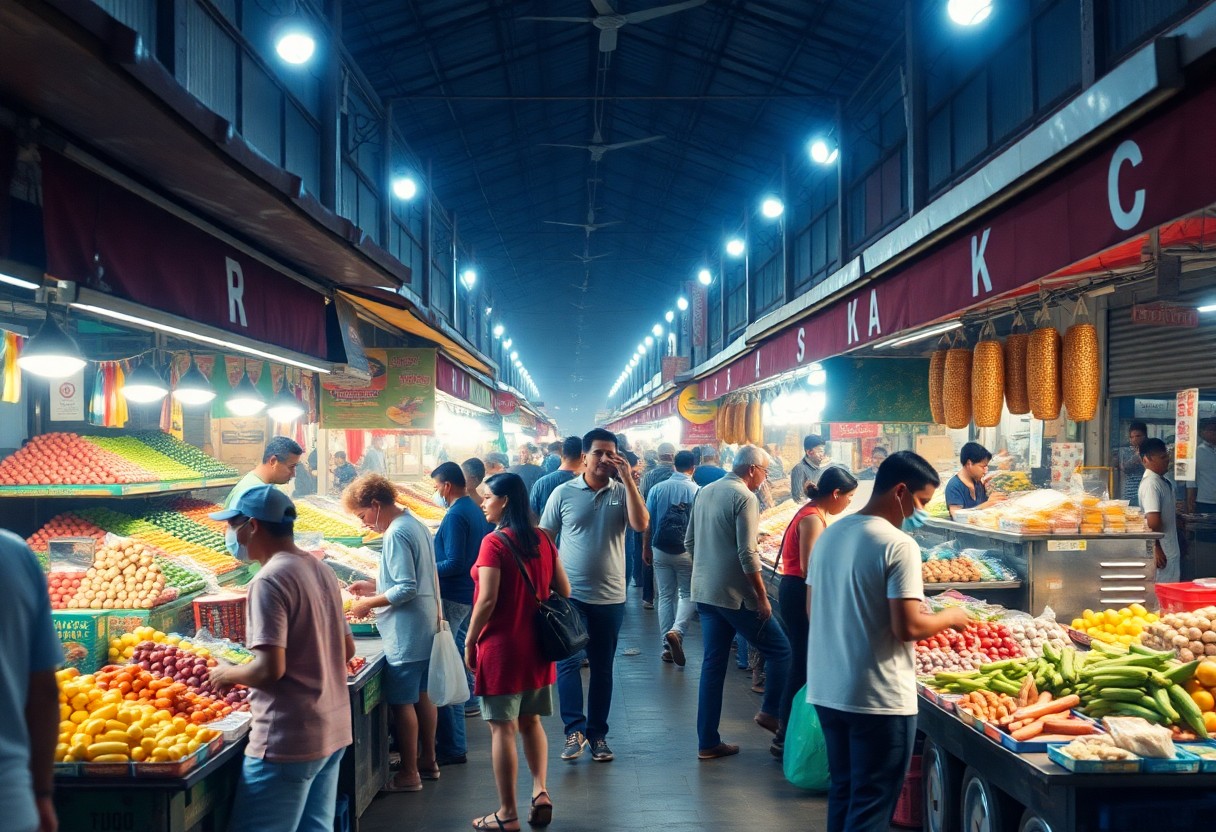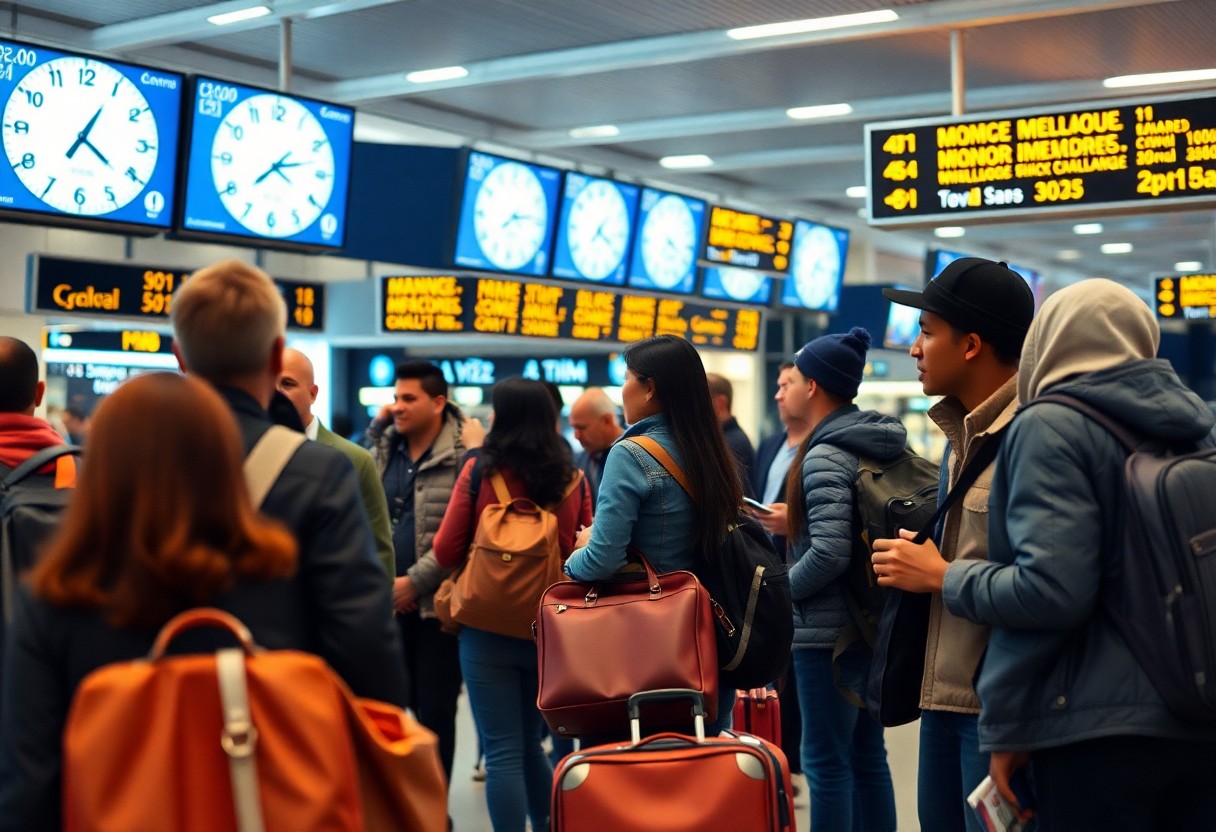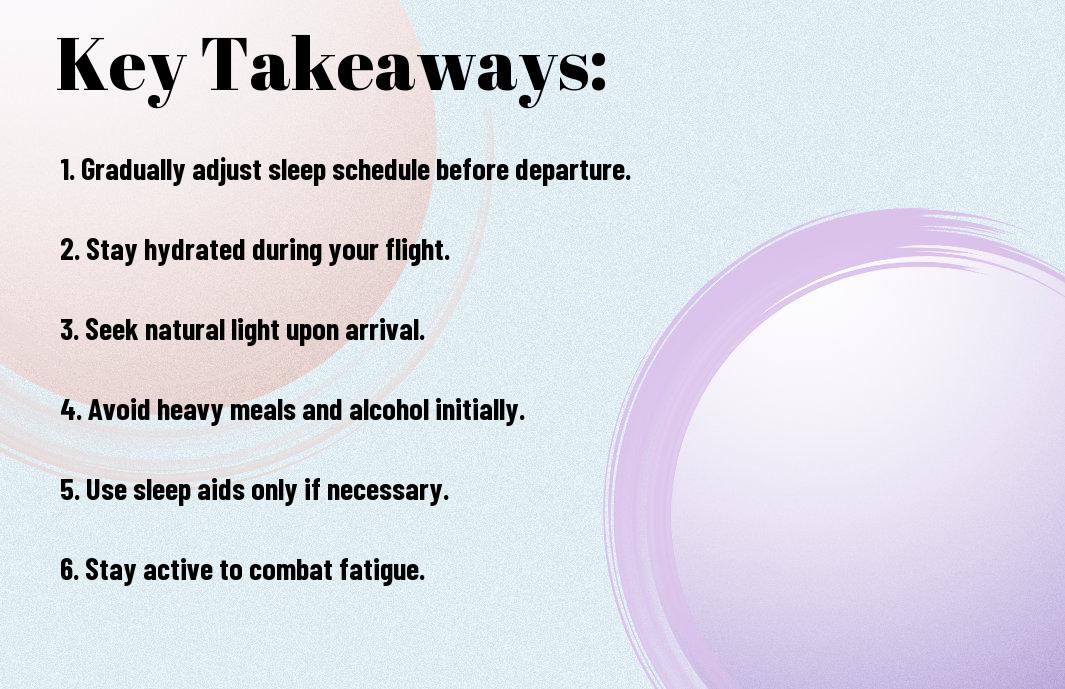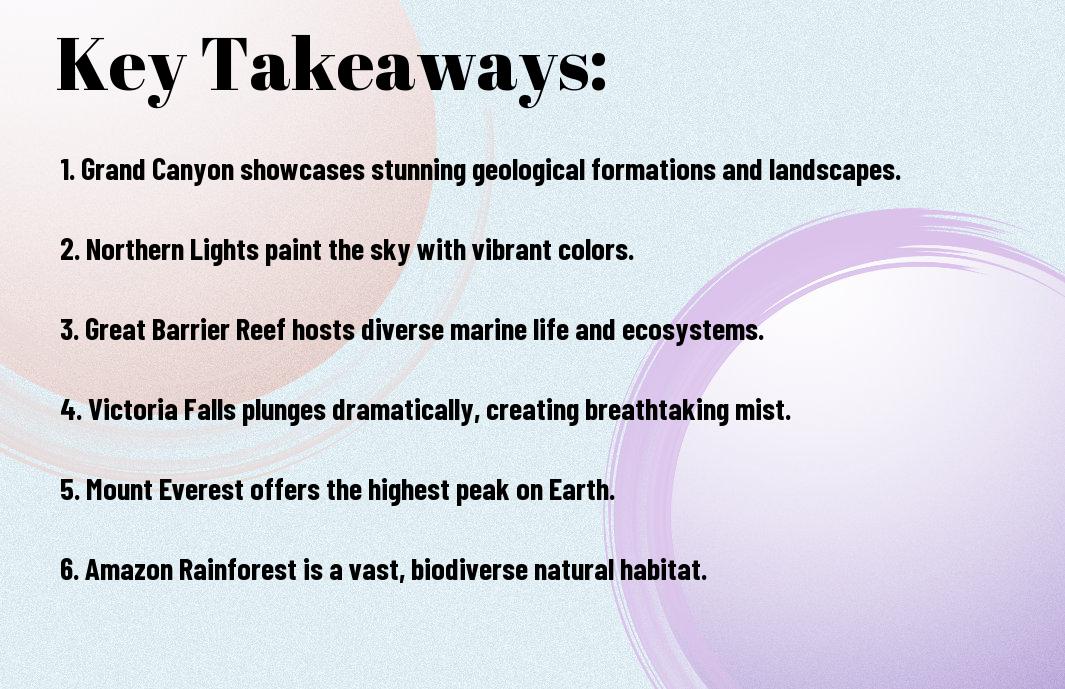Most travelers seek experiences that go beyond the ordinary, and the world is filled with hotels that offer just that. From underwater retreats to treehouse havens, these unique accommodations provide unforgettable settings for your adventures. In this blog post, you will discover some of the most remarkable hotels around the globe, each with its own distinct character and charm. Prepare to be inspired as you explore these enchanting destinations that will elevate your travel experience to new heights.
Key Takeaways:
- Unconventional Architecture: Many unique hotels feature innovative designs that draw inspiration from their natural surroundings or cultural elements, offering guests an immersive experience.
- Thematic Experiences: Some hotels provide themed accommodations that transport visitors into different worlds, enhancing their stay with creative decor and tailored activities.
- Sustainable Practices: Several unique hotels prioritize eco-friendly initiatives, utilizing renewable resources and promoting conservation, making them appealing to environmentally conscious travelers.
Iconic Treehouse Hotels
As a nature lover, staying in a treehouse hotel offers a unique experience that immerses you in the beauty of the outdoors. Elevated high above the ground, these remarkable accommodations provide breathtaking views and a sense of adventure. You can reconnect with nature in a tranquil setting, all while enjoying the comforts of modern living, making them a fantastic choice for your next getaway.
Canopy Treehouses in Costa Rica
Iconic for their breathtaking locations, the canopy treehouses in Costa Rica allow you to sleep among the treetops. Surrounded by lush rainforests, you can experience the sounds of wildlife as you drift off to sleep. These elevated lodgings often feature striking views and eco-friendly designs, inviting you to immerse yourself in the beauty of this Central American paradise.
The Treehotel in Sweden
Around every corner of The Treehotel, you’ll find a different take on what it means to stay in a treehouse. This innovative hotel features a series of unique, architect-designed tree rooms that blend contemporary style with serene nature. Each room has its own distinctive theme, from a mirrored cube reflecting the surrounding forest to a bird’s nest offering cozy comfort. You are provided with an unforgettable experience that merges design and nature seamlessly.
Considering a stay at The Treehotel opens up a world of imaginative relaxation. You can choose from various themed rooms, each designed to provide a unique experience while ensuring your comfort. Located in the heart of Swedish Lapland, the hotel also allows easy access to outdoor activities year-round, from hiking in the summer to skiing in the winter. As night falls, enjoy the sensation of sleeping among the trees, with starry skies and the tranquility of the forest surrounding you.
Underwater Hotels
Now imagine sleeping beneath the waves, surrounded by marine life in a stunning underwater hotel. These unique accommodations allow you to experience the wonders of the ocean up close, often featuring panoramic views of aquatic creatures swimming just beyond your window. From luxurious suites to cozy retreats, underwater hotels offer an extraordinary experience that merges comfort with the beauty of the sea.
The Manta Resort in Tanzania
Underwater at The Manta Resort, you can unwind in a unique submerged room that offers 360-degree views of the vibrant marine ecosystem. This floating hotel situated off Pemba Island in Tanzania combines luxury and adventure, allowing you to drift off to sleep while watching colorful fish and sea turtles glide through the water.
Atlantis The Palm in Dubai
Against the backdrop of Dubai’s skyline, Atlantis The Palm features an awe-inspiring underwater suite that immerses you in an aquatic wonderland. This iconic resort is renowned for its luxurious amenities and captivating marine experiences.
Palm’s underwater suites at Atlantis The Palm seamlessly blend luxury with an extraordinary underwater experience. As you gaze through floor-to-ceiling windows, you’ll witness the vibrant marine life from the comfort of your lavish room. The resort is home to the massive Aquaventure Waterpark and The Lost Chambers Aquarium, making it an ideal destination for families and couples alike. Indulge in world-class dining and unwind in a stunning hotel that brings the wonders of the ocean to your doorstep.
Ice Hotels
Despite the chilly temperatures, ice hotels offer a truly unforgettable experience for those seeking something different. Constructed entirely from ice and snow, these remarkable accommodations showcase the artistry of ice sculptors and provide you with a unique ambiance unlike any other. From sleeping on ice beds adorned with fur blankets to sipping drinks from ice glasses at the bar, an icy retreat promises a memorable adventure that you won’t find in traditional hotels.
Icehotel in Sweden
The Icehotel in Sweden is the world’s first and most famous ice hotel, rebuilt each winter using natural ice from the nearby Torne River. Guests can enjoy intricately designed rooms and suites, all featuring stunning ice sculptures that serve as both art and décor. With activities like dog sledding and Northern Lights tours, this hotel is an ideal choice for those looking to immerse themselves in an enchanting winter wonderland.
Hotel de Glace in Canada
On the other side of the Atlantic, you can find the Hotel de Glace in Canada, a breathtaking creation made entirely of snow and ice. Every year, this hotel opens its doors with an entirely new design, showcasing the talents of skilled artisans. Offering a magical setting close to Quebec City, it’s perfect for thrill-seekers and romantics alike looking for a captivating getaway.
Indeed, the Hotel de Glace invites you to experience winter magic like never before, with its distinctive architecture and luxurious amenities. From ice sculptures that tell stories to themed rooms, each visit feels uniquely tailored. You can soak in the beauty of the icy decor while sipping hot chocolate in the ice bar or enjoying a soothing dip in the outdoor hot tubs. Whether you seek adventure or a romantic escape, the Hotel de Glace is a shimmering gem that leaves you with cherished memories.

Cave Hotels
Once again, you can experience the extraordinary with cave hotels, where nature meets luxury in a remarkable way. These unique accommodations provide an unforgettable stay, immersing you in the natural world while offering modern amenities. From ancient formations to luxurious suites, cave hotels offer a truly distinctive atmosphere that captivates the imagination and stirs the soul.
Cappadocia Cave Suites in Turkey
With its enchanting fairy chimneys and ancient rock formations, Cappadocia Cave Suites invites you to indulge in a one-of-a-kind stay. You will find beautifully designed rooms carved into the soft volcanic rock, blending traditional Turkish decor with contemporary comforts, creating a serene escape that is both historical and luxurious.
La Cueva in Puerto Rico
About a mile from the beach, La Cueva offers you a unique lodging experience inside a beautifully restored cave. Surrounded by lush tropical landscapes and crystal-clear springs, this hotel provides rustic charm combined with modern conveniences, making it an enchanting spot for nature lovers and adventurers alike.
In addition to its stunning setting, La Cueva features individually designed rooms with artistic touches that reflect the captivating cave environment. With amenities like a swimming pool, communal outdoor spaces, and a laid-back vibe, you’ll feel fully immersed in the natural beauty of Puerto Rico. This hidden gem is perfect for creating unforgettable memories while connecting with nature.
Floating Hotels
Not just your average accommodations, floating hotels offer a serene escape on tranquil waters, combining luxury with a unique experience. These innovative lodging options provide sweeping views, direct water access, and a sense of adventure that traditional hotels simply can’t match. Whether you are seeking a peaceful retreat or an adventurous getaway, floating hotels are sure to elevate your travel experience.
Floating Hotel in Sweden
To experience the Nordic charm, the Floating Hotel in Sweden immerses you in the breathtaking archipelago. Each room features panoramic views of the surrounding waters, allowing you to connect with nature in a unique setting. With eco-friendly designs and a focus on sustainability, this hotel combines comfort with an appreciation for the environment, ensuring you have a memorable stay.
The Floating Seahorse in Dubai
Floating above the waves, The Floating Seahorse in Dubai takes luxury to another level, showcasing underwater views that redefine your hotel experience. Each villa is designed with both aesthetic pleasure and your indulgence in mind, featuring exquisite interiors and access to breathtaking marine life right from your window.
Further enhancing your stay at The Floating Seahorse is the option for underwater living, where you can retreat to your lavish underwater bedroom, surrounded by colorful coral reefs and vibrant sea life. This unique design lets you immerse yourself in the aquatic environment, ensuring an unforgettable experience filled with luxury and serenity. With private pools, spacious sun decks, and personalized services, your stay here will be nothing short of extraordinary.
Unique Boutique Hotels
To experience a personalized and intimate stay, unique boutique hotels deliver charm and character that larger chains simply can’t match. These hotels often reflect the local culture, offering you a genuinely immersive experience. From quirky décor to bespoke services, they provide an ideal base for your adventures while ensuring you feel right at home.
21c Museum Hotel in the USA
Any art enthusiast will appreciate the 21c Museum Hotel, where contemporary art and hospitality intertwine. This innovative hotel features rotating art installations, making your stay a unique experience every time you visit. The curated collection enhances your stay, with each nook and cranny filled with creativity that sparks conversation and imagination.
The Harington’s Hotel in Edinburgh
Hotels can often feel impersonal, but The Harington’s Hotel in Edinburgh invites you into a cozy, intimate setting. Nestled in a historic area, the hotel combines traditional charm with modern comfort, providing an ideal atmosphere for your stay. The inviting rooms and warm hospitality make it an excellent choice for travelers seeking a unique and memorable experience in the heart of the city.
At The Harington’s Hotel, you’ll find individually styled rooms that reflect the rich history of Edinburgh while offering modern amenities. The hotel’s prime location allows you to explore the iconic sites of the city, ensuring that you can easily weave in and out of attractions such as the Edinburgh Castle and the Royal Mile. With friendly staff ready to assist, your experience at The Harington’s Hotel is designed to be as relaxing and enjoyable as possible, making it a hidden gem for those looking for something special during their travels.
Summing up
As a reminder, exploring the most unique hotels around the world offers you an unparalleled opportunity to experience travel in innovative and diverse settings. From underwater accommodations to treehouses and converted historical landmarks, these properties provide not just a place to stay, but a memorable adventure that enhances your journey. Embrace the chance to indulge in extraordinary styles and cultures, making your trips even more unforgettable by choosing unique hotels that reflect your taste and curiosity.
Q: What are some characteristics that make a hotel unique?
A: Unique hotels often offer distinctive architectural designs, unusual locations, or themed accommodations. For example, some hotels might be situated in historic buildings, like converted castles or lighthouses. Others might feature extraordinary amenities, such as underwater rooms or treehouses in the forest. Additionally, unique hotels may provide immersive local experiences, including local cuisine, culture, and personalized services that reflect their surroundings.
Q: How can I find unique hotels for my travels?
A: One way to discover unique hotels is by searching specialized travel websites or using travel apps that focus on boutique and alternative accommodations. Social media platforms like Instagram can also be a great source of inspiration, as many users share their experiences staying in remarkable hotels. Furthermore, travel blogs and forums often highlight lesser-known gems that provide authentic experiences, offering a deeper insight into local culture compared to standard hotel chains.
Q: What is the benefit of staying in unique hotels instead of standard chain hotels?
A: Staying in unique hotels can enhance your travel experience by providing a sense of adventure and novelty. These accommodations often reflect the character of their destination, allowing guests to engage more deeply with the culture and history of the area. Moreover, unique hotels frequently offer personalized service and bespoke experiences that standard chain hotels may not provide. This can lead to more memorable stays and opportunities to connect with the local community.






